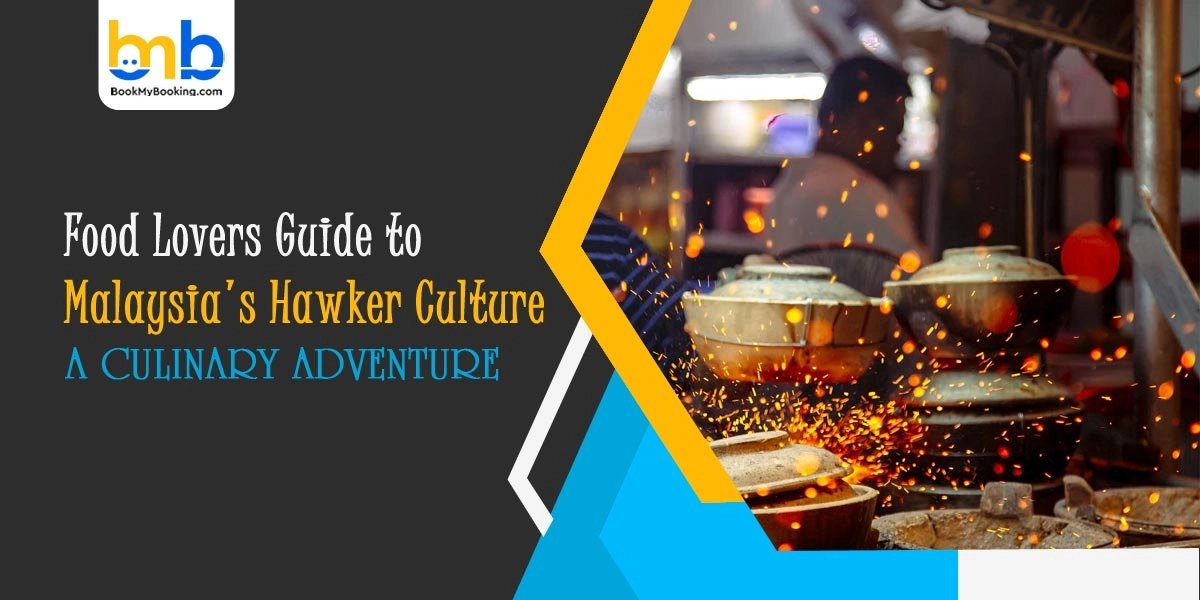Malaysia is a vivacious Southeast Asian country and a culinary paradise, providing a smorgasbord of flavours, textures, influences and intriguing Malaysian hawker culture. From its bustling streets to serene coastal towns, the country is a melting pot of cultures- Malay, Chinese, Indian, Thai, Javanese, and more. Its food reflects diversity, making it a dream destination for lovers seeking new tastes and unforgettable experiences.
In this Malaysian Street Food Guide, we will take you on a mouthwatering journey across Malaysia's coasts, where each region offers unique dishes to tantalise your taste buds. Whether in the cosmopolitan city of Kuala Lumpur or the coastal haven of Penang, there is always something new to discover.
Let's dive into Malaysia's best dishes from coast to coast!
Merging Malaysia: A Culinary Coruscation
Malaysia is known for its diverse culture, which reflects its multicultural society. From Indian curries to Chinese dumplings, Malay, Satay, and Nasi Lemak, the country has an endless variety of delicious food that attracts food lovers from all around the world. Whether you prefer Malaysian street food or fine dining, Malaysia has it all.
So pack your bag and make your next trip to Malaysia now!
20-Street Food in Malaysia That You Must Try
The street food scene in Malaysia is vibrant and striking, and it is where you can find some of the country's best food. Hawkers, or street vendors, are a common sight in Malaysia, and they offer a variety of delicious and affordable dishes.
We give you famous Malaysian dishes straight out of the traveller's plate.
1. Satay
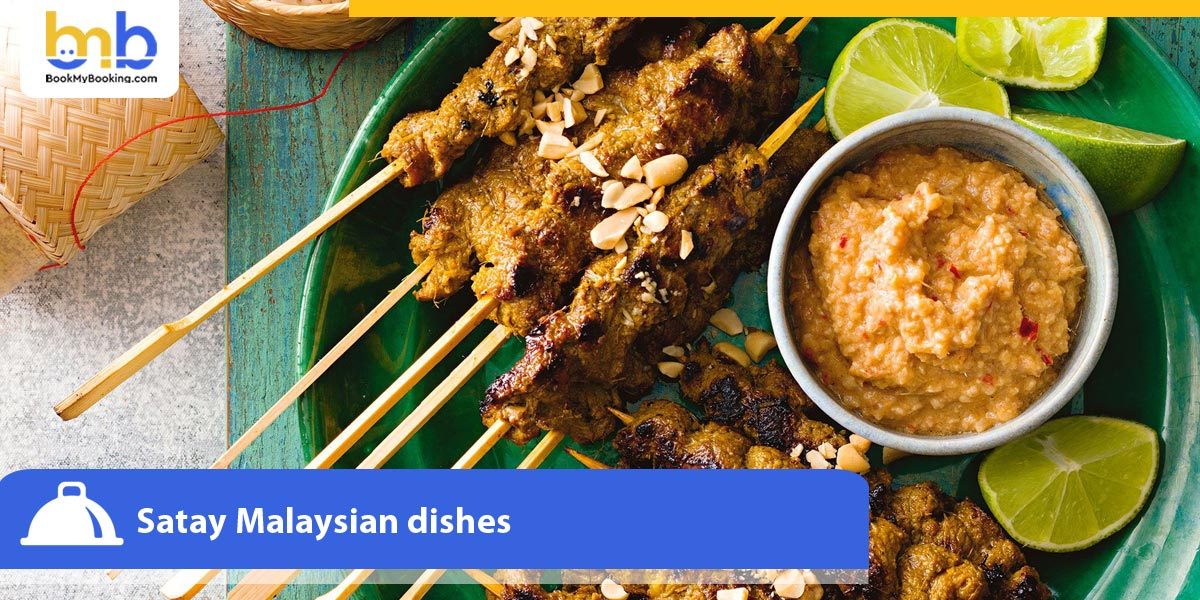
Satay is a famous food in Malaysia that consists of grilled meat skewers marinated in a mix of spices and served with peanut sauce. It is believed to have originated in Indonesia but has also become a staple in local flavours in Malaysian cuisine. The meat used in Satay can be chicken, beef, or lamb, and it is usually served with a variety of accompaniments such as cucumber, onions, and Ketupat, a type of rice cake. Satay is a favourite among locals and tourists and is often found at night markets and street stalls throughout the country.
2. Nasi Lemak

Nasi Lemak is a staple dish often eaten for breakfast, and it is available at many street foods in Kuala Lumpur stalls and restaurants throughout the country. The dish reflects Malaysia's diverse culinary traditions, which combine Chinese, Malay, and Indian influences into a unique and delicious meal. Nasi Lemak is made of fragrant rice cooked in coconut milk and pandan leaves, which gives it a subtle aroma and a slightly sweet flavour. The rice, Malaysian hawker food, is typically served with various accomplishments, including crispy fried anchovies, peanuts, cucumber slices, and a spicy sambal sauce.
3. Char Kway Teow
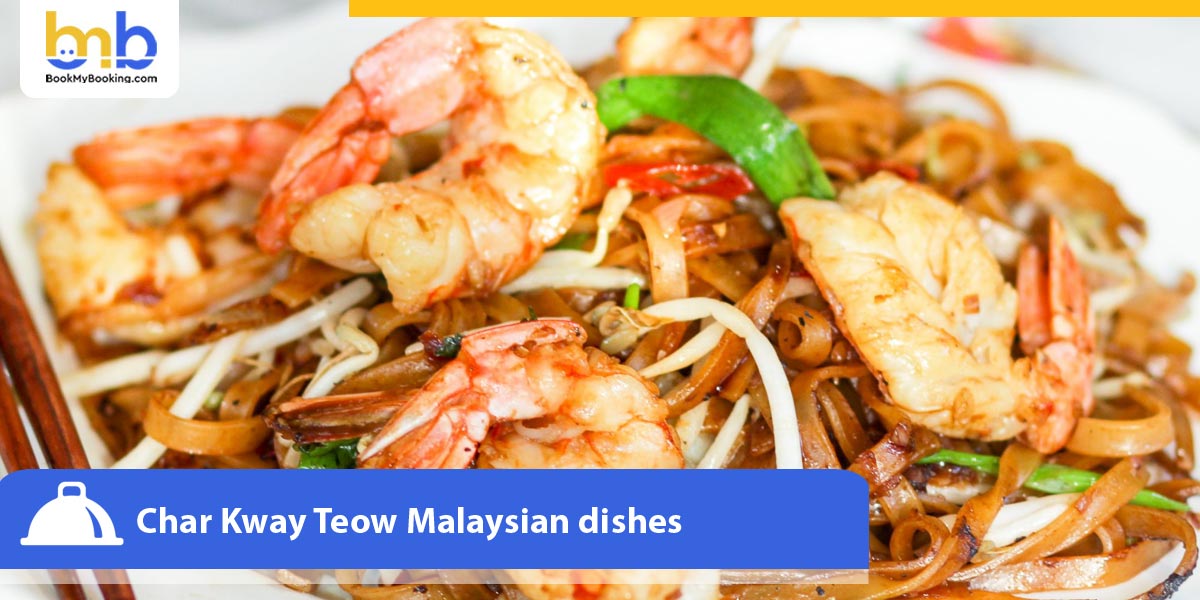
Char Kway Teow is a famous Malaysian street food that locals and tourists love. It is a stir-fried noodle dish with flat rice noodles, soy sauce, chilli paste, shrimp and bean sprouts. The dish is cooked in a wok on high heat, giving it a smoky flavour that is hard to resist. Char Kway Teow is often served with a side of lime and chilli sauce for that extra kick of flavour, providing authentic Malaysian culinary experiences. It may not be the healthiest dish, but it is undoubtedly one of the tastiest and a must-try for anyone visiting Malaysia. The dish is cooked in a wok over high heat, giving it a smoky flavour that is hard to resist. Char Kway Teow is often served with a side of time and chilli sauce, adding an extra kick of flavour representing traditional Malaysian food culture. It may not be the healthiest dish, but it is undoubtedly one of the tastiest and must-try dishes for anyone visiting Malaysia.
4. Nasi Kandar
Nasi Kandar is the best hawker food in Malaysia, from Penang. It consists of steamed rice served with various curries and side dishes such as fried chicken, fish or vegetables. The curries are usually spicy and rich in flavour, mixing Indian and Malay influences. The dish is typically eaten with one's hands using ten pieces of rice to scoop up the curries and other dishes.
5. Laksa
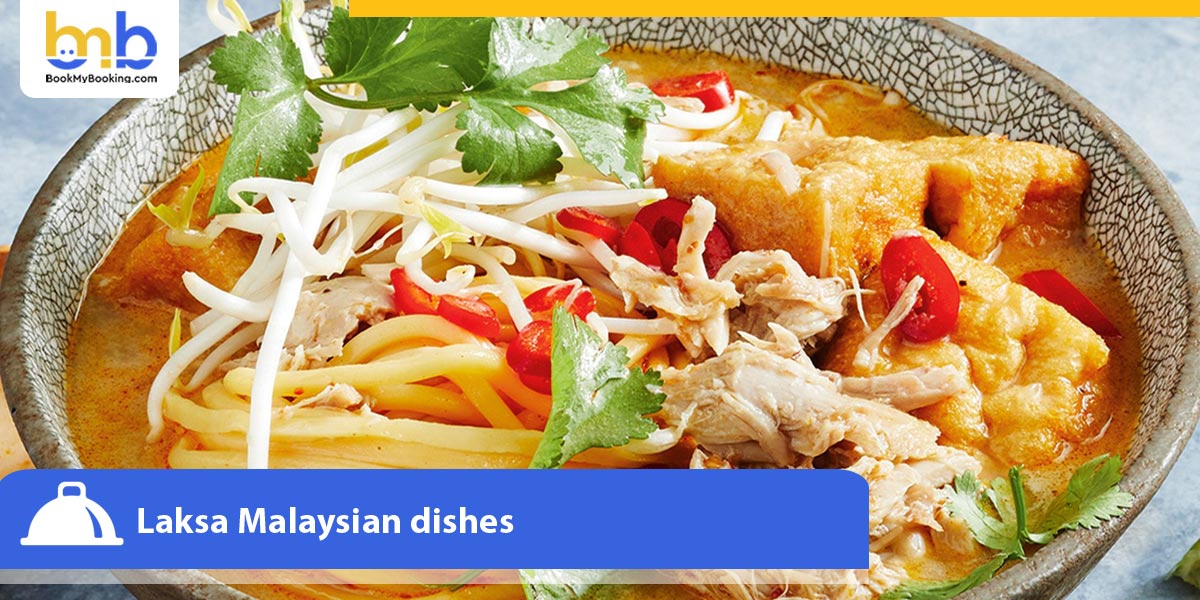
Laksa, a hawker food in Malaysia, is a spicy noodle soup popular in Malaysia and other Southeast Asian countries. It is a flavourful dish with rice broth, coconut milk, lemongrass, galangal, and chilli paste. The broth is then poured over the rice noodles, prawns, fish cakes, and tofu and is usually garnished with herbs such as mint and cilantro.
6. Lok Lok
Lok Lok, one of the most famous Malaysian street foods, means 'dip dip'. One can choose from various skewers and dip them in appetising hot broth. Skewers of meat, vegetables, fish balls, dumplings, and seafood are then boiled and dipped into multiple enlivening dips like garlic, Malaysian Satay, or chilli sauce. 'Lok Lok' is accompanied by coconut water, barley drinks, or tea to counter the soup's spiciness, perfectly describing the Malaysian food culture.
7. Rojak
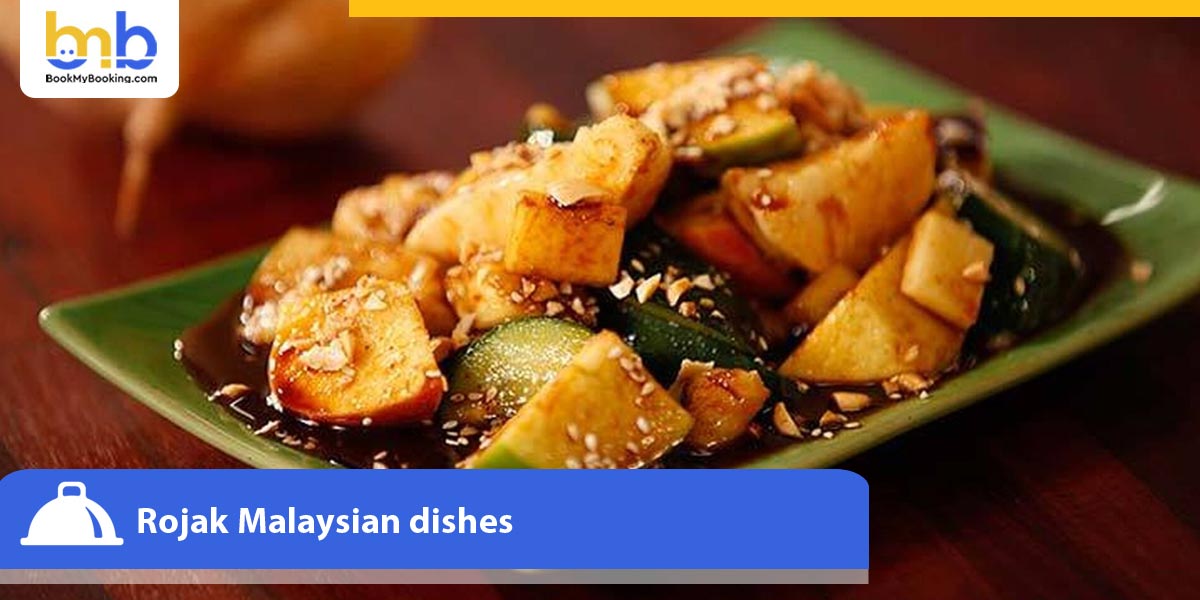
Rojak, which means mixed in Malay, is a salad comprising mixed fruits and vegetables. The dish exemplifies the region's cultural diversity by including Chinese and Malay ingredients. Vegetables like water, spinach, and Bean spirits are blanched, whereas cucumber and turnips are chopped to add crunch. Pineapples, mangoes, apples, and starfruits are added to the dish and are readily available at various hawker centres in Malaysia.
8. Cendol
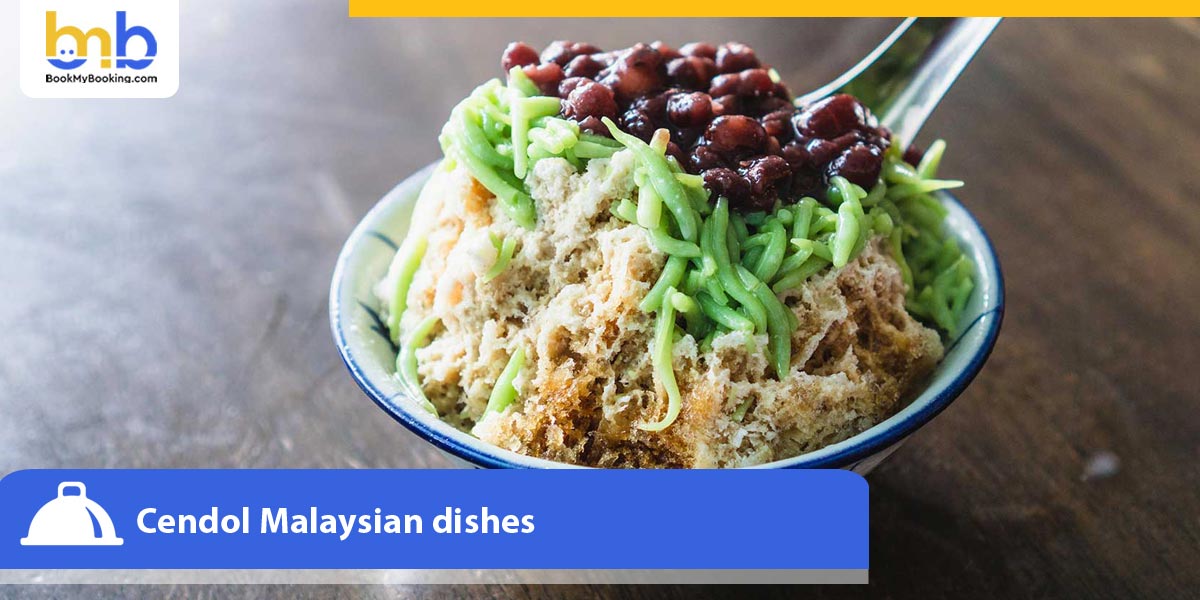
Little known outside Southeast Asia, Cendol is a famous dessert in Malaysia. It is ubiquitous and can be found in all restaurants and hawker centres. This icy dessert provides a respite from the tropical heat. The worm-like green jellies, made of rice flour, add to the dish's taste. Cendol's iconic hawker dishes in Malaysia can be eaten from a bowl or drunk through a straw. This street food of Malaysia is best experienced after having a hot bowl of Laksa.
9. Apam Balik
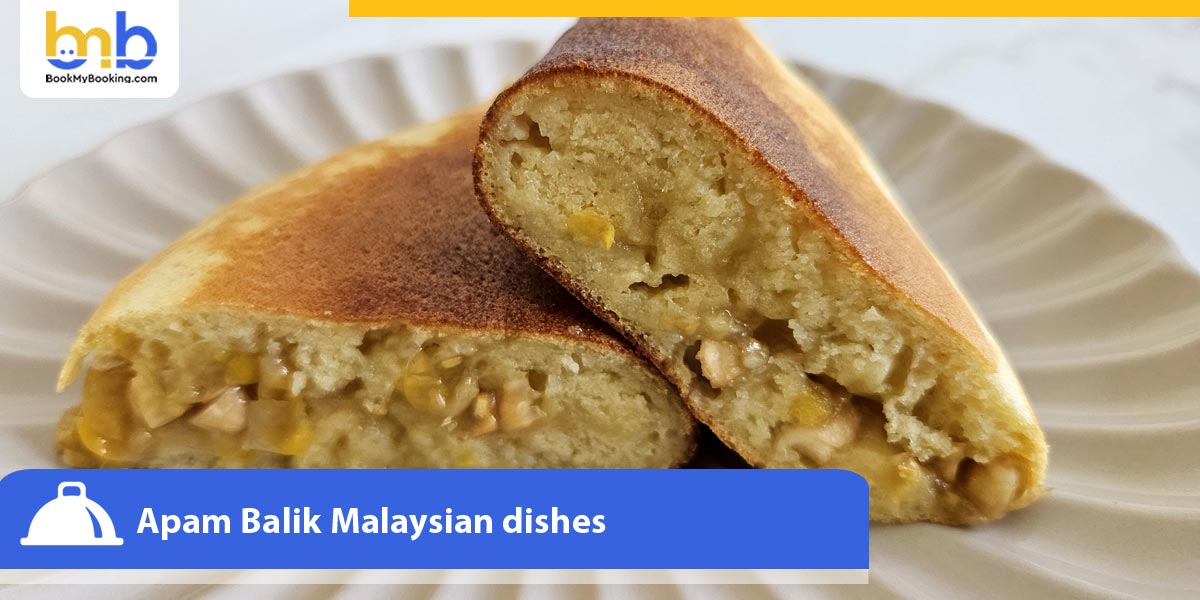
Apam Balik, known as overturned pancake, is a sweet peanut pancake that is a favourite street food in Malaysia. The pancake is stuffed with buttery, sugary peanut filling. The cake is sully thick and has a honeycomb texture. The corners are made to be thin and crispy. One can also add sweet corn to the filling to enhance the taste. It is also known as the affordable food in Malaysia; the dish is also known as Kuih Haji, Chin Loong Pau and Apam Pulau Pinang. It is usually found in the late afternoons when people look for snacks to savour with tea.
10. Fried Bee Hoon
This simple yet delicious street food is often served for breakfast. Bee Hoon means drive sticks. The rice vermicelli is one of the best Malaysian street foods. It can be eaten in soups with gravy and salads. It is seasoned with soy sauce, rice wine, pepper, and salt. Topping the dish with a fried omelette enhances the taste. It is very easy to get yourself a plate of Bee Hoon; it is readily available on the streets. Bee Hoon can also be a meal. It has a delightful aroma, often paired with vegetables, chicken, shrimp, or tofu. Garnished with spring onions and chill,i this light yet satisfying dish is a popular choice for breakfast, lunch, or a quick meal.
11. Roti Canai
Roti Canal is a flatbread of Indian origin that is immensely popular in Malaysia. In the Malay language, it means flying bread. It is usually eaten with dal, chicken, or fish curry, and sometimes, it is served sweetened with condensed milk, bananas, and chocolate cream.
This delicious Malaysian hawker food is similar to a croissant due to the flakiness of the layers of the oiled dough. The Roti is made with flour, butter and ghee. Roti Canai can be easily bought from hawkers and restaurants.
12. Koay Chiap
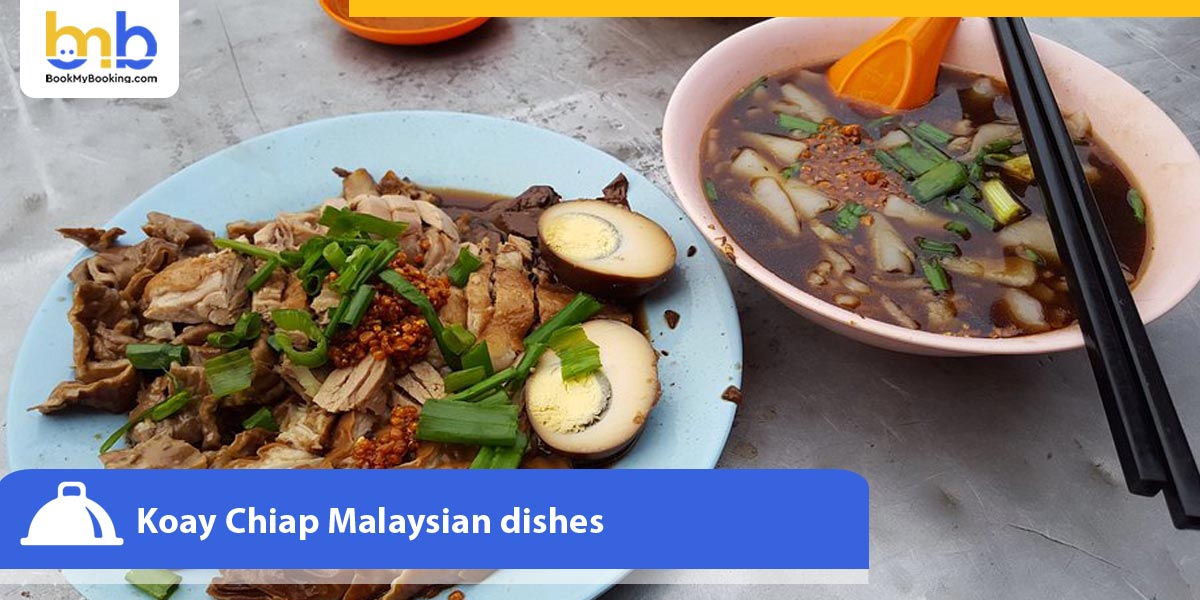
Koay Chiap is a braised duck noodle soup unique to Penang. It contains duck meat, eggs, intestines, and blood. The soup is served with boiled eggs, rice noodles, and soy sauce instead of a regular noodle. Koay Chaip uses Koay as a thicker version of the noodles. All the ingredients are immersed in a light herbal soup. Unlike most hawker foods in Malaysia, Koay Chiap is filling. Garnished with fried garlic and fresh herbs, this Penang speciality offers a savoury, aromatic experience with tender meat and silky noodles in every spoonful.
13. Chee Cheong Fun
This street food of Malaysia was brought to its shore by 19th-century Chinese immigrants. It is very popular among the Chinese groups in Malaysia. Chee Cheong Fun is similar to rice noodle rolls and can be found in dim sum restaurants. In its initial form, it is served with soy sauce. Today, the dish is one of the famous Malaysian dishes in varied forms across the peninsula. Chee Cheong Fun in Malaysia is a silky, steamed rice noodle with sweet hoisin sauce, savoury soy sauce, or rich curry gravy. Often garnished with sesame seeds and fried shallots, it is plain or stuffed with shrimp, pork or mushrooms, offering a smooth, flavourful and satisfying bite.
14. Teh Tarik
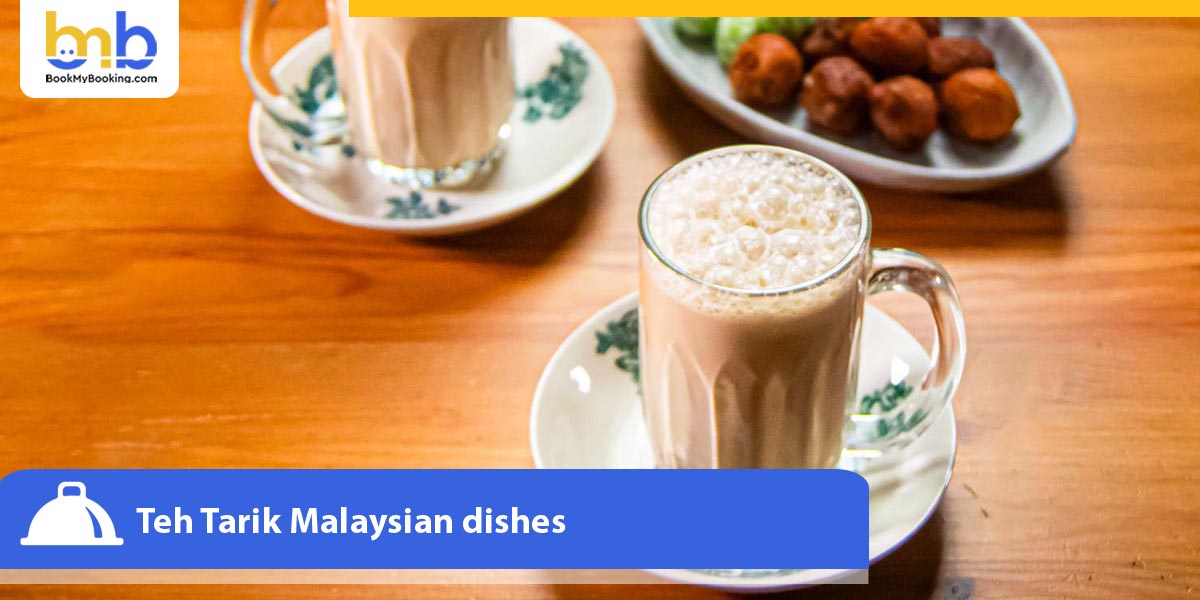
Teh Tarik translates to pulled tea. It is a Malaysian Ceylon milk tea often sold in Mamak restaurants—tea from one glass to another by lifting the glass as much as possible. Pulling the tea high creates a layer of frothiness at the top, making it lip-smacking affordable food in Malaysia. The tea is enjoyed with Bhai curry or Roti Canal. The origin of this drink can be traced back to the arrival of Indian Muslims in Malaysia. Today, everyone enjoys the drink that can be found in tea stalls. The process of making frothy pulled milk creates its signature creamy texture and velvet foam, sweet, aromatic and comforting. Teh Tarik is a staple at mamak stalls, enjoyed hot or iced alongside local delicacies.
15. Ice Kachang
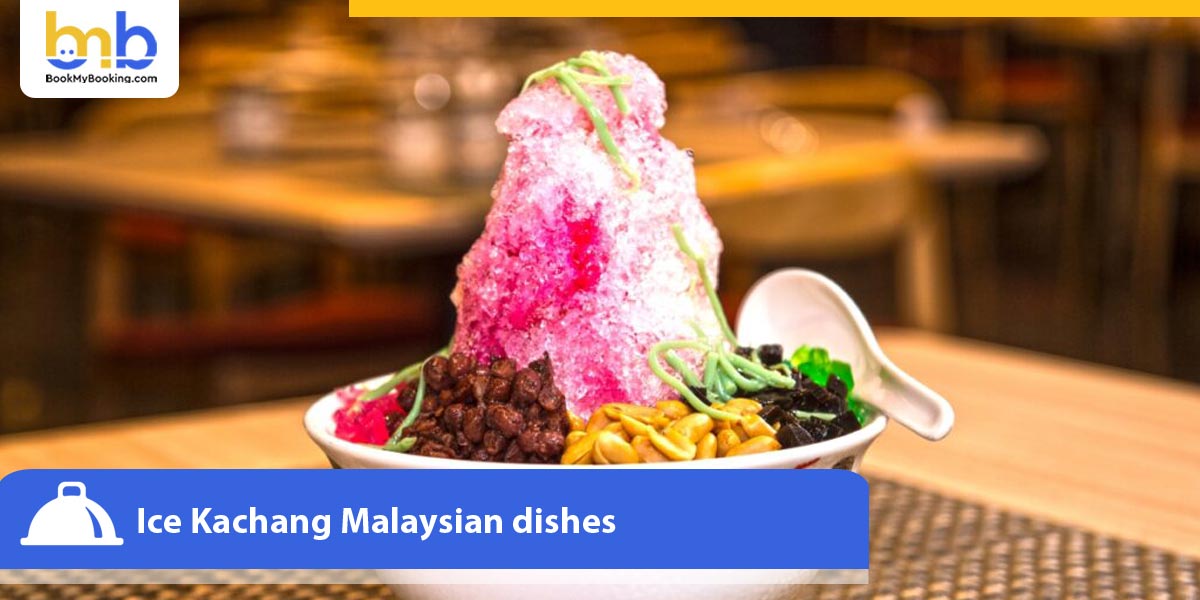
Street vendors commonly sell widespread shaved ice in Malaysia, ice kachang, a popular Malaysian street food. Toppings like red beans, sweet corn, palm nuts and grass jelly add to the taste. Fruits and raisins are also added to the dessert. Shaved ice is topped with pink syrup, giving it a bubble gum-type taste. Ice Kachang is an alternative to ice cream or yoghurt in the summer. Ice Kachang is layered layered over sweet red beans, grass jelly, corn and chewy attap seeds. Topped with ice cream or peanuts, this refreshing treat provides a delightful mix of textures and flavours perfect for cooling down in Malaysia's tropical heat.
16. Durian
It is known as the most miniature fruit in the world. Durian is a fruit native to Southeast Asian countries like Malaysia and Indonesia, narrating the local flavours of Malaysia. It is a foot-long, slightly oval fruit with an outer shell covered with spikes. The fruit weighs between two and seven pounds. It is known for its long-lasting smell that lingers around the shell after removing the fruit. Though it's small and awful, the taste is heavenly. Durian, also known as the King of Fruits in Malaysia, is a tropical delicacy with a strong aroma and creamy custard-like flesh. Its rich, sweet and slightly bitter taste varies by variety, from Musang King’s buttery smoothness to D24's balanced flavour.
17. Hokkien Mee
Hokkien Mee is one of the iconic hawker dishes in Malaysia and a beloved street food. The dish is popular in Malaysian and Indonesian cuisines and originates in the Chinese province of Fujian. It replicates the Wok Hei technique, where noodles are braised in soy sauce for the best flavours. Although there are three types of Hokkien Mee, the dark noodles from Kuala Lumpur are the most famous. Some eateries toss the noodles over the charcoal stove for the smoky flavour. Pork, fish cake, cabbage, and squid are the main ingredients in the Malaysian food culture.
18. Wonton Mee
Wonton noodles or wonton mee are thin eggs served with Chinese barbecue pork, pickled green chillies, vegetables, and meat dumplings in soup. Green chillies are an essential ingredient of the dish, balancing it. This noodle dish features springy egg noodles topped with chair sour and plump wontons filled with minced meat. One of the famous Malaysian dishes served dry with dark soy or in a flavourful broth is garnished with leafy greens and crispy fried shallots for extra texture. It offers a balance of sweet, savoury, and umami flavours topped with succulent chair siu, plump wontons filled with seasoned minced meat and leafy greens. A comforting, flavourful dish enjoyed across Malaysia.
19. Kuih Kosui
Kuih Kosui is a saucer-shaped rice cake flavoured with screw pine leaves juice. It is best eaten with freshly grated coconut. Malaysian street food is sweet and is filled with stir-fried coconut. The dish can be found as a rice dough wrapped in banana leaves. It is often infused with pandan for its fragrance and topped with freshly grated coconut. This bite-sized treat perfectly balances sweetness, earthiness, and slight saltiness. Kuih Kosui is a famous Malaysian street food steamed cake made from rice flour, tapioca flour, and palm sugar, giving it a soft, chewy texture and a rich caramel-like sweetness. It is infused with pandan for a fragment aroma and served with freshly grated coconut for delightful combinations of flavours.
20. Curry Puff
As the name suggests, this savoury Malaysian food has curry filling in a rich puff pastry. Although the general filling is chicken, vegetarian options include potatoes, which are known as the best Malaysian hawker foods. The puff is deep-fried and served fresh, although some healthy alternatives like baked puffs exist. It is considered a delicious finger food to be relished on the go! Curry Puff is a beloved Malaysian snack featuring a crispy, flaky or doughy pastry shell with curried potatoes, chicken or sardines. Deep fried or baked to golden perfection, it flaunts a savoury, aromatic filling infused with spices.
Overview of Malay Cuisine
Spices in Malay Food
- The generous use of spices is the main characteristic of traditional Malay cuisine.
Coconut Milk is essential in Malay cuisine
- Coconut milk is essential and a part of traditional Malaysian food culture in almost all Malay dishes, except prawn paste, which is used as a base for sambal, a rich sauce or condiment made from belacan.
Rice is a staple food in Malaysia
- Rice is the staple food in many other Asian cultures, including Malaysia, and every Malay meal is served with rice.
Aromatic Spicy Food of Malaysia
- Spicy, strong, and aromatic can describe Malay food flavours in the traditional Malaysian food culture.
Big Pot Significant in Malay Culture
- Another interesting fact is that it is common to see Malays in a kampong or village gathering and stirring up beef rendang or chicken curry around a big pot during significant festivals.
Integration of Communities via Food
- That is because Malaya's qualities inform their cooking, which means food can be prepared in a communal affair.
Parting Thoughts
Explore the mouthwatering Malaysian street food to taste the authentic Malaysian hawker culture. You can get a feel for the place when visiting the streets. Delicious vegetarian options will also have you leaping for second servings. The cuisine boasts a sophisticated palette of species that makes a food tour in the country so wonderfully tasteful.
 Indian Rupee
Indian Rupee Pound Sterling
Pound Sterling UAE Dirham
UAE Dirham US Dollar
US Dollar Algerian Dinar
Algerian Dinar Angolan Kwanza
Angolan Kwanza Argentine Pesos
Argentine Pesos Armenian Dram
Armenian Dram Aruban Florin
Aruban Florin Australian Dollar
Australian Dollar Azerbaijani Manat
Azerbaijani Manat Bahraini Dinar
Bahraini Dinar Baht
Baht Balboa
Balboa Bangladeshi Taka
Bangladeshi Taka Belarusian Rubles
Belarusian Rubles Belize Dollars
Belize Dollars Bermuda Dollars
Bermuda Dollars Bhutanese ngultrum
Bhutanese ngultrum Bolivares Fuertes
Bolivares Fuertes Brazilian Reais
Brazilian Reais Burundian Franc
Burundian Franc Cambodian Riels
Cambodian Riels Canadian Dollar
Canadian Dollar Central African CFA franc
Central African CFA franc Chilean Pesos
Chilean Pesos Colombian Pesos
Colombian Pesos Colón
Colón Congolese Franc
Congolese Franc Cuban Pesos
Cuban Pesos Danish Krone
Danish Krone Denars
Denars Djiboutian Franc
Djiboutian Franc Dominican Pesos
Dominican Pesos Dong
Dong East Caribbean Dollars
East Caribbean Dollars Egyptian Pounds
Egyptian Pounds Ethiopian Birr
Ethiopian Birr Euro
Euro Forint
Forint Georgian Lari
Georgian Lari Ghanaian Cedi
Ghanaian Cedi Guarani
Guarani Guinean Franc
Guinean Franc Guyanese Dollars
Guyanese Dollars Hong Kong Dollars
Hong Kong Dollars Hryvnia
Hryvnia Icelandic Krona
Icelandic Krona Indonesian Rupiahs
Indonesian Rupiahs Iranian Rials
Iranian Rials Jordanian Dinar
Jordanian Dinar Kenyan Shilling
Kenyan Shilling Kips
Kips Koruny
Koruny Krone
Krone Kuna
Kuna Lati
Lati Lebanese Pounds
Lebanese Pounds Leva
Leva Libyan Dinar
Libyan Dinar Lira
Lira Litai
Litai Malagasy Ariary
Malagasy Ariary Malawian Kwacha
Malawian Kwacha Malaysian Ringgit
Malaysian Ringgit Maldivian Rufiyaa
Maldivian Rufiyaa Mexican Pesos
Mexican Pesos Moldovan Leu
Moldovan Leu Moroccan Dirham
Moroccan Dirham Myanmar Kyat
Myanmar Kyat Nairas
Nairas Namibian Dollars
Namibian Dollars Nepali Rupee
Nepali Rupee New Dollars
New Dollars New Lei
New Lei New Shekels
New Shekels New Zealand Dollars
New Zealand Dollars Nuevos Soles
Nuevos Soles Omani Rial
Omani Rial Pakistani Rupees
Pakistani Rupees Papua New Guinean Kina
Papua New Guinean Kina Philippine peso
Philippine peso Pula
Pula Qatari Rials
Qatari Rials Quetzales
Quetzales Rand
Rand Russian Rubles
Russian Rubles Rwandan Franc
Rwandan Franc Saudi Riyals
Saudi Riyals Singapore Dollars
Singapore Dollars Soms
Soms South Korean Won
South Korean Won St. Helena Pounds
St. Helena Pounds Sudanese pound
Sudanese pound Sums
Sums Swedish Krona
Swedish Krona Switzerland Francs
Switzerland Francs Syrian Pounds
Syrian Pounds Tajikistani Somoni
Tajikistani Somoni Tanzanian Shilling
Tanzanian Shilling Tenge
Tenge Tugriks
Tugriks Tunisian Dinar
Tunisian Dinar Ugandan Shilling
Ugandan Shilling Uruguayo Pesos
Uruguayo Pesos West African CFA franc
West African CFA franc Yemeni Rials
Yemeni Rials Yen
Yen Zambian Kwacha
Zambian Kwacha Zlotych
Zlotych

